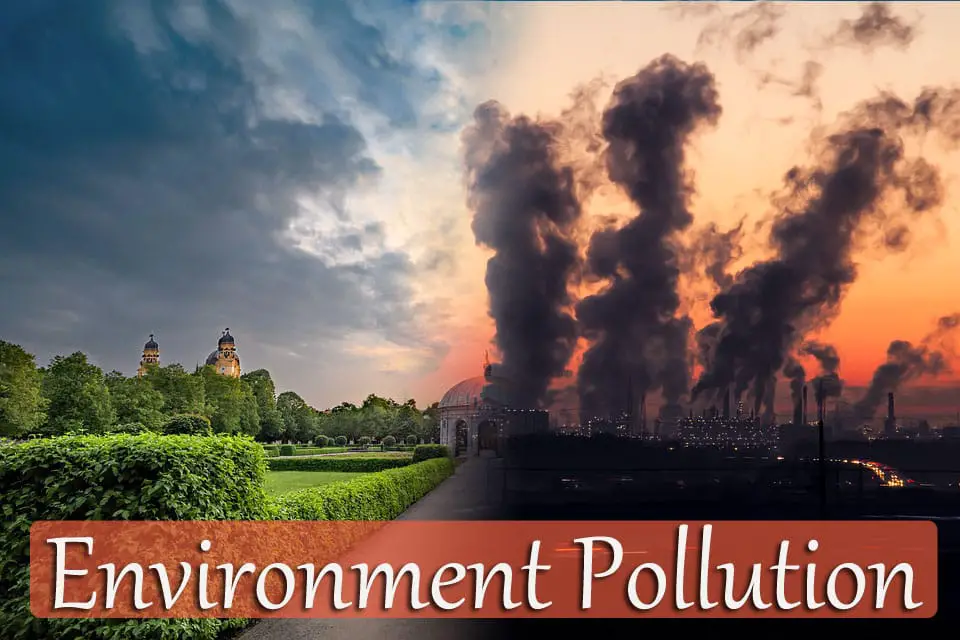Almost every human activity resulted in a decline or decline in the quality of the natural environment, it is considered pollution. Environmental pollution is not a new phenomenon, yet it remains the biggest problem in the world before humanity, and is the major environmental causes of sickness and mortality. In 2015, it was estimated that the illness caused by pollution led to 9 million untimely deaths, three times more than the number of deaths from malaria, AIDS and tuberculosis.
Typically, medium and low -income countries have more environmental pollution than developed countries, possibly due to ignorance of poverty, poor law and forms of pollution. It is possible that humans face pollution every day, without knowing about it or possibly we have become immunized in our fast life . The more impossible it may seem, as a result of being ignorant of the forms of pollution, humans do activities that produce harmful by-products in forms and quantities that the environment no longer can retaliate without completely distorting its system. For example, forest harvesting, burning of bushes, throwing of agriculture and domestic waste in water bodies, using chemicals in aquatic animals and improper disposal of electronic waste, all contribute to air, land and water pollution. In addition, as the human population density increases, human activities also increase along with increasing influence on the environment.
The effect is not only on humans but also on other aquatic and terrestrial animals including microorganisms, which maintain their bio-chemical functions required to maintain the ecosystem due to their abundance and diversity. The environment is not limited to industrialization, urbanization, population growth, exploration and mining due to environmental pollution, but there is also a cross -border movement of pollutants from developed countries. Cross -border pollution is one of the reasons why pollution remains a global challenge. Various routes, mainly through air and water, can wreak havoc in another country, so no country can be indifferent to pollution. Also, the movement of non-functional electricity and electronic equipment (EEE) in developing countries under the guise of bridge digital divide is a serious cause of air, water and soil pollution by poisonous metals.
Additionally, environmental pollution occurs by entering harmful substances, such as gaseous pollutants, poisonous metals and particle substances (PM) into the atmosphere; By entering sewage, industrial waste, agricultural runoff and electronic wastewater bodies; And activities such as mining, deforestation, landfill and illegal dumping of waste causing soil pollution. It is not uncommon to show off ignorance that the natural environment has become unstable as a result of human activities, so such activities continue even when they are causing serious diseases and even death. In moderate and low -income countries, some human activities that have proved to be harmful to the environment are still in vogue, either poor law, low enforcement of punishment or indifference to the influence of such activities on the environment and the impact of such activities on the environment.
Effects of environmental pollution are particularly air pollution, and its impact is unevenly prevails in low -income people, children, elderly and other weak groups in developing countries. Knowledge of the causes and consequences of environmental pollution is paramount, but the price of inaction is very large. Various physical and chemical approaches have been applied to free the environment from pollution, but most of them cause additional environmental problems and are expensive. To really deal with the pollution caused by continuous emerging obstinate pollutants, environmentally friendly and affordable approaches to produce a low secondary by-product in literature are being considered. Among these methods, microbial bioremediation is probably considered worldwide because the restoration of environment through this means is viable and environmentally friendly. Various types of pollution exist, but three main types of pollution will be considered: air, water and soil/land pollution.
Read Also:
- Effects Of Pollution On Aquatic Biota
- A Review On The Effects Of Water Pollution On Freshwater Fish Species
- Water Pollution: Causes, Negative Effects And Prevention Methods
- Prevention Of Water Pollution
- Effects And Control Ways of Water Pollution
- Causes Of Water Pollution
- Introduction To Water Pollution
- Introduction To Air Quality And Pollution Control
- Introduction And History Of Anthropogenic Pollution
- Air Pollution And Your Health
- What Is Air Pollution
- Environmental Effects Of Plastic Pollution






